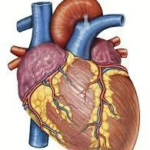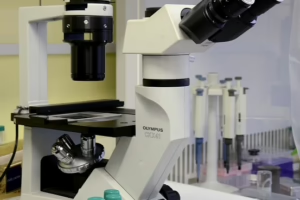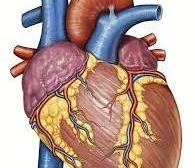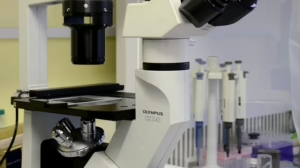The Comprehensive Exploration of Human Biology
Introduction
Human biology is a fascinating field that merges the principles of biology with the complexities of human life. This discipline encompasses various aspects, from molecular biology to ecology, addressing how humans interact with their environment and how biological systems function at different levels. In this article, we will delve into the intricate structures, functions, and interactions that define human biology, casting light on the astonishing systems that govern our existence.
1. The Building Blocks of Life: Cells
1.1 Cell Theory
The fundamental unit of life in humans, like all living organisms, is the cell. The cell theory posits that:
- All living organisms are composed of one or more cells.
- The cell is the basic unit of life.
- All cells arise from pre-existing cells.
1.2 Eukaryotic Cells
Humans are eukaryotes, characterized by cells that possess a nucleus and membrane-bound organelles. This cellular architecture allows for compartmentalization of functions, which is essential for complex processes.
1.3 Cell Types
There are several types of cells in the human body:
- Muscle Cells: Responsible for movement.
- Nerve Cells: Transmit signals through the nervous system.
- Epithelial Cells: Form protective layers.
- Blood Cells: Involved in transportation and immune responses.
2. Human Genetics
2.1 DNA Structure and Function
Deoxyribonucleic acid (DNA) is the hereditary material in humans. It carries the instructions necessary for the growth, development, and functioning of the body. The structure of DNA is a double helix formed by nucleotides, which consist of a sugar, phosphate, and a nitrogenous base.
2.2 Genes and Chromosomes
Humans possess 23 pairs of chromosomes, consisting of thousands of genes. Each gene encodes for specific proteins, which play crucial roles in the organism’s phenotype and overall health.
2.3 Genetic Variation
Genetic variation is essential for evolution and adaptability. It results from mutations, gene flow, and sexual reproduction, contributing to the diversity seen within human populations.
3. Human Systems Overview
Human biology can be categorized into different systems that work synergistically to maintain homeostasis. The main systems are:
3.1 The Skeletal System
- Structure: Comprises bones, cartilage, and ligaments.
- Function: Provides structure, protects organs, and facilitates movement.
3.2 The Muscular System
- Composition: Includes skeletal, smooth, and cardiac muscles.
- Role: Enables movement and aids in maintaining posture and body temperature.
3.3 The Circulatory System
- Components: Heart, blood vessels, and blood.
- Function: Transports oxygen, nutrients, and waste products throughout the body.
3.4 The Respiratory System
- Structure: Comprises the nasal cavity, trachea, lungs, and diaphragm.
- Purpose: Facilitates gas exchange and provides oxygen to the body.
3.5 The Digestive System
- Organs Involved: Mouth, esophagus, stomach, intestines, liver, and pancreas.
- Function: Breaks down food, absorbs nutrients, and eliminates waste.
3.6 The Nervous System
- Components: Central nervous system (CNS) and peripheral nervous system (PNS).
- Role: Controls and coordinates bodily functions and responses.
3.7 The Endocrine System
- Glands: Includes the pituitary, thyroid, adrenal, and pancreas.
- Function: Regulates metabolism, growth, and mood through hormones.
3.8 The Immune System
- Components: Lymph nodes, spleen, white blood cells, and antibodies.
- Role: Protects the body against infections and diseases.
3.9 The Reproductive System
- Male Structures: Testes, penis, and associated glands.
- Female Structures: Ovaries, uterus, and fallopian tubes.
- Function: Responsible for producing offspring and maintaining genetic diversity.
4. Homeostasis and Feedback Mechanisms
Homeostasis refers to the body’s ability to maintain a stable internal environment despite external changes. This involves complex feedback mechanisms:
4.1 Negative Feedback
Negative feedback loops are processes where the body detects changes and initiates responses to counteract them, such as regulating body temperature or blood glucose levels.
4.2 Positive Feedback
In contrast, positive feedback amplifies responses until a specific event occurs, like the release of oxytocin during childbirth.
5. Human Development and Growth
5.1 Stages of Development
Human development is marked by several stages:
- Embryonic Development: Begins with fertilization and continues until the end of the eighth week.
- Fetal Development: From the ninth week to birth, where significant growth and organ formation occur.
- Childhood through Adulthood: Encompasses stages such as infancy, childhood, adolescence, and adulthood, each characterized by different physical changes.
5.2 Factors Influencing Development
Various factors, including genetics, nutrition, and environmental influences, shape human growth and development.
6. Human Evolution
Understanding human biology is incomplete without considering our evolutionary history. The modern understanding of human evolution is rooted in various disciplines, including paleontology, genetics, and anthropology.
6.1 Evolutionary Timeline
Humans share a common ancestor with chimpanzees and bonobos, dating back approximately six million years. Key milestones in human evolution include:
- Australopithecines: Early bipedal primates.
- Homo habilis: The first tool-users.
- Homo erectus: Known for controlling fire and migrating out of Africa.
6.2 Adaptations
Human evolution has brought about significant adaptations, such as bipedalism, larger brain sizes, and complex social structures, which have allowed for survival in diverse environments.
7. Human Health and Disease
7.1 Common Diseases
Various factors can affect human health, including genetics, lifestyle, and environmental factors. Common diseases include:
- Cardiovascular Diseases: Affect the heart and blood vessels.
- Diabetes: Characterized by high blood sugar levels.
- Cancer: Resulting from uncontrolled cell growth.
- Infectious Diseases: Caused by pathogens, such as bacteria and viruses.
7.2 The Role of Nutrition
Proper nutrition is vital for maintaining health and preventing diseases. Essential nutrients include carbohydrates, proteins, fats, vitamins, and minerals.
7.3 Preventive Medicine
Preventive strategies, such as vaccinations, regular screenings, and healthy lifestyle choices, play a crucial role in mitigating disease risk.
8. The Future of Human Biology
8.1 Advances in Technology
Recent technological advancements, such as CRISPR and genome sequencing, offer exciting possibilities for human biology, including gene therapy and personalized medicine.
8.2 Ethical Considerations
With advancements come ethical considerations. Questions arise concerning gene editing, cloning, and the potential consequences of modifying human biology.
Conclusion
Human biology is a multifaceted discipline that encompasses various systems and processes critical for life. From the cellular level to whole-organism interactions, understanding human biology provides insight into our health, development, and evolution. The ongoing research and technological advancements continue to unveil the marvels of human life, paving the way for future discoveries that may revolutionize our understanding of what it means to be human.
References
- Lodish, H. et al. (2016) Molecular Cell Biology. 8th ed. W. H. Freeman and Company.
- Alberts, B. et al. (2014) Molecular Biology of the Cell. 6th ed. Garland Science.
- Campbell, N. A., & Reece, J. B. (2017) Biology. 11th ed. Pearson Education.
- National Institutes of Health (NIH). (2020). Human Genome Project.
- Ridley, M. (2004) Evolution. 3rd ed. Blackwell Publishing.
- Murray, C. J. L. et al. (2020) “Global Health Metrics 2019: the Revision of Disability-Adjusted Life Years and Years Lived with Disability.” The Lancet. 396(10258): 1888-1906.
- World Health Organization (WHO). (2021). Global health estimates: leading causes of death.
This article provides a detailed overview of human biology, examining its various aspects, systems, and relevance in health and evolution. Expanding on these concepts at the individual and societal levels can illuminate our understanding of human nature and our place within the ecosystem.


























Add Comment